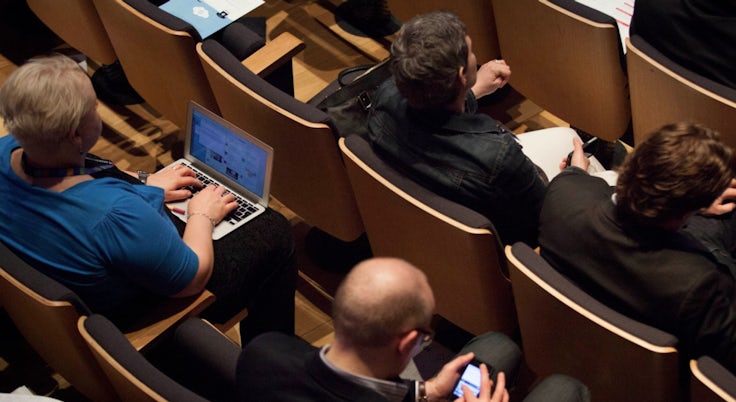The Guardian Changing Media Summit: what marketers need to know
For its 10 year anniversary The Guardian’s Changing Media Summit focused on what digital disruption has meant over the past few years for marketers and publishers. Here are some of our key learnings.

Programmatic has changed the industry, but it’s not the whole picture
While speaking on the future of advertising, Michael Rubenstein, president of Appnexus said that brands face an existential threat if they don’t use programmatic. He said that ad buying has leant itself to becoming automated, but only humans can provide the creativity to make them successful.
In a seperate debate which looked at how digital has reinvented marketing Tom Lucas, director of branded services and digital marketing for BBC Worldwide added that when it comes to programmatic: “There is an important distinction between efficiency and effectiveness”
Lucas added that although programmatic is due to make the advertising industry efficient, marketers still need to work on making ads effective so that they actually mean something to consumers.
Speaking on the same panel, Javier Sanchez Lamelas, vice president of marketing for Coca-Cola Europe said: “Effectiveness should come first. Creating beautiful content people want to see is magic.”
Sanchez Lamelas added that the ability to make people ‘feel something’ is not just about optimising media.
The real reason so many brands now own a digital ‘lab’
During a panel debate on the reinvention of marketing, which included marketing bosses from Direct Line, The Economist and BBC, the discussion turned to why so many brands have recently invested in digital labs.
Sanchez Lamelas said that the core reason that so many brands, such as Tesco, Guardian and Coca-Cola have made their own labs is due to the lack of certainty of programmatic, which he admits is at a point of infancy.
“We still don’t know what the future will be, we just need to experiment,” he added.
Sanchez Lamelas continued that now, more than ever consumers have the ability to tune out of branded content, so marketers need to ‘re-write the manual’, which will require a lot of testing. If marketers put their content in the wrong place they pay for it more than ever.
Native advertising is still not uniform
Despite increasingly defined guidelines set by joint industry bodies, there is still some confusion on what is considered native advertising. Executives from News UK, Outbrain and Guardian Labs discussed how native advertising differs from traditional advertorials in a panel discussion.
Tiffanie Darke, creative content director for News UK says that a ‘brought to you’ message on one platform can mean a ‘sponsored by’ message on another which confuses the audience on whether branded content on a website is part of the editorial or an ad.
As an example, Anna Watkins, managing director for Guardian Labs explained that on the Guardian, ‘sponsored editorial’ means that a brand can commission a piece of work based on their interests but has no comment on how the Guardian produces that editorially.
However, ‘advertisement feature content’ means that the brand is woven into the storytelling.
As every publisher has its own process in distinguishing the two, the confusion continues according to Darke.
Brands need to give wearable tech meaning
Lucas said that for a significant lift in wearable tech use, brands need to work with technologists to make the tech meaningful for consumers.
“No one has shown what these devices are really for yet,” added Lucas.
Mark Evans, group marketing director for Direct Line said that the brand is already looking at how to use wearable tech to allow consumers to assess life and health insurance.






